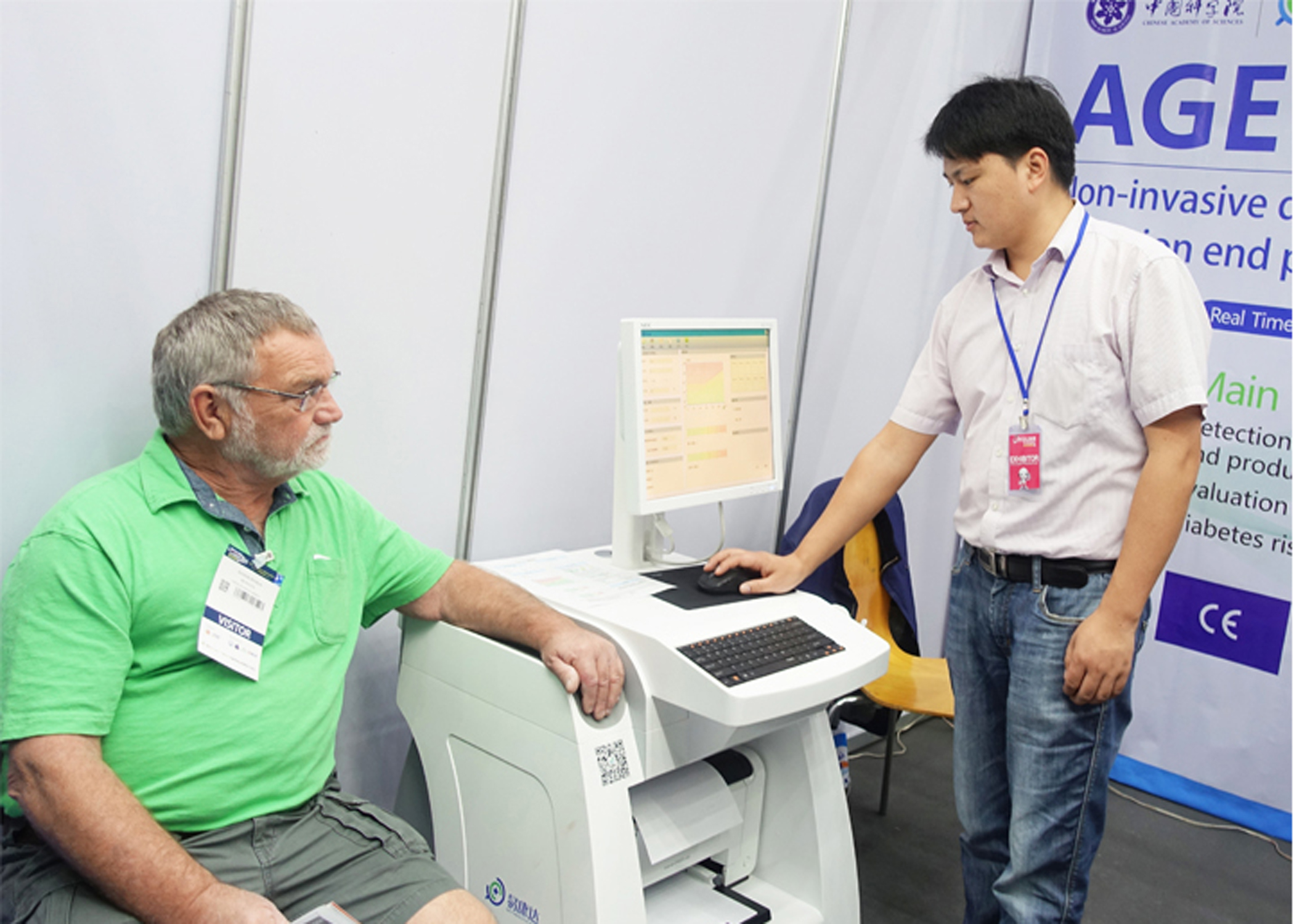
Hefei Institutes of Physical Science (HFIPS) researchers reported they have developed a pain-free, non-invasive and fast way to make early warning for diabetes.
It is all down to a non-invasive scan equipment that checks the Advanced Glycation End Products (AGE) level concentrating in a person’s skin tissue.
The researchers say they have developed the entire technology that had been involved in the scan equipment manufacturing, from the scan to the data process, among which skin tissue spatially-resolved fluorescence spectroscopy technology was thought by the team to be the key.
What is AGE?
Before taking a closer look into their research work to realize the non-invasive detection, what is AGE and how it is related to the chance of developing diabetes have to be explained.
Advanced Glycation End Products (AGE) are a class of stable end products occurring as a result of condensation, rearrangement, cleavage and oxidation modification of free amino groups of large-molecule substances including proteins, amino acids, lipids or nucleic acids with aldehyde groups of reducing sugars under non-enzymatic conditions, which was discovered first by L. C. Maillard, a French chemist, and then is referred to as Maillard Reaction.
Generally speaking, AGE increases slowly at low level in skin of the people who has normal glycometabolism, however, accelerated accumulation of AGE could be brought for some reason, bad living habits, like smoking, is one of them.
AGE in vivo, especially with an accelerated increase, can induce insulin resistance and impair islet β cells, which damages glucose regulation and then leads to diabetes. That is why AGE has been thought an early risk factor for diabetes.
The key technology
AGE for itself is an early signal for diabetes, what if we can discover the abnormally elevated concentrations that is considered as a biological indicator of diabetes?
Here comes the fluorescent property of AGE which may lend a big hand to us for detecting it in skin tissue.
"If we can detect the AGE and its concentration in skin tissue, it will help people know the risk of developing diabetes at early stage and then they can do something. And the fluorescent property makes it feasible to be detected, and we thought the photoelectric technology can solve this.” Said Wang Yikun, who is scientist with HFIPS and led the research team.
The team developed the strategy to detect AGE in skin tissue just by emitting low intensity light but highly safe for people on skin. Then the AGE will reflect fluorescence signal that is collected by a high-precision and high-sensitivity array detector. After a data process and analysis, a risk assessment report will be printed out.
"Our equipment opens the door to early warning of diabetes then the people with high risk could do something on it, like changing life habits. And it is pain-free and non-invasive which we think will make the detect method easier to be applied.” Wang described their creation as promising to help people know more about the risk of developing diabetes at early stage.
Now, the team is deploying their equipment in many hospitals, healthcare centers and community services.

Contact:
ZHAO Weiwei
Hefei Institutes of Physical Science (http://english.hf.cas.cn/)
Email: annyzhao@ipp.ac.cn